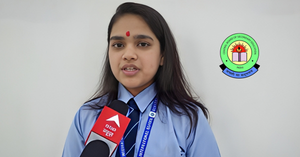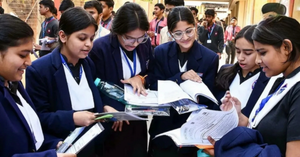One of the most challenging questions for parents moving to a new country is where to send their kids to school. Even for seasoned traveling families, every country is different, and India has its own specific opportunities and challenges. The following 12 tips will help you get a head start on what to expect when applying to schools in India and provide you with specific areas to concentrate on as you explore your options.
Expat Parents – Tips for Choosing a School in India
1. Start Your Research with SchoolMyKids
SchoolMyKids is an online, one-stop-shop for parents living in several countries (Bahrain, Bangladesh, India, Kuwait, Malaysia, Maldives, Nepal, Nigeria, Qatar, Singapore, Thailand, and the UAE) including India. While its resources include everything from food and nutrition advice to educational activities and resources, the platform specializes in helping parents, including expats, find the right school for their child. Check out the Find the Best School for Your Child platform and search the database for schools by country, city, and board.
2. Public, Private, International—Which way to go?
Your three main options in India are public schools, private schools, and international schools. This breakdown should help you understand what your options are and the direction you want to go.
Public Schools in India
Public schools in India, also called Government schools, will likely not provide the learning environment that meets your standards or what your child is familiar with. Class sizes are often large, with 50 or more students. The food will be primarily Indian. While some public schools do English as the language of instruction, many others do not. Your child will be required to learn Hindi or the local language of the state. And often, even in English-medium schools, teachers may resort to the local language to reach more students. The schools are publicly funded and unfortunately, vulnerable to funding and resource challenges. Positives include the affordability of public school, the cultural immersion experience, and your child picking up the local language quickly.
The school year for public schools starts April 1 and ends March 31. The summer break is in May and June.
Private Schools in India
This is the option we are currently using with our daughter. While some private schools are definitely better than others, they can be a viable option for many families. After India’s independence the Government left many of the British schools in place. Most of these legacy schools can be found in the larger cities in India. Many private schools have excellent reputations, high academic standards, and an infrastructure and extracurricular activities more aligned with the international schools than the public schools. Private schools often provide instruction in English, while offering Hindi and/or the local language as a separate class. After two years our daughter’s Hindi is outstanding. While tuition at a private school is not necessarily cheap, the cost will likely be less than any of the international schools in your city. Private schools are a viable option for families who are planning on living in India for an extended period of time and would like their kids to have a more culturally integrated experience than what an international school can provide. Like public schools, the school’s food options will likely all be Indian.
Legacy schools are not without their challenges. First, these private schools are extremely competitive. Preference is given to siblings and families who have graduated from the school. There are always a number of limited spots open. Be sure to submit your application on time and utilize whatever connections you have to help you through the process. Second, private schools have a reputation of focusing on the academic side of an education, with a lower focus on extracurricular activities. While we did not find this the case with our daughter’s school, if extracurricular activities are important to you, follow up with specific questions and speak to parents who currently have kids enrolled. Third, many of the legacy schools focus on rote learning, which for many expat children, will be a different learning experience than what they experienced back home.
Like the public schools in India, most private schools also start April 1 and end March 31. The summer break is in May and June.
International Schools in India
International schools in India will probably offer your child the closest experience to what your children had back home. Not only will the curriculum and teaching style be closer to what your child is used to, the school will likely look and feel familiar. In addition, the level of education and training of the teachers, the facilities, and the amenities will be more similar too. Last, food options at the school will undoubtedly be a mix of international foods and dishes.
While many schools will market themselves as an international school, be sure to double-check the curriculum the school uses. Examples of international curriculum include EYP (Early Years Program), PYP (Primary Years Program), (IB) (International Baccalaureate), or CISS (Cambridge).
Adapting to a new curriculum is often easier for younger students than older students. If your child is in secondary school, you may want to prioritize finding an international school using the same or similar curriculum as their last school. Another consideration, if you know where your child will be going after your time in India, consider finding a school using the same curriculum.
If your child’s first language is not English, and you are looking for English-medium schools, ensure the school has an English as a Second Language (ESL), English as an Additional Language (EAL), or similar type of department. Meet with the teachers to understand their program’s approach to teaching English and get a feel for how they work with students.
While your child will not have the same cross-cultural experience with India, compared to a child enrolled in a private or public school, the student population at the international school will be a diverse group of international students.
Tuition and school fee cost at the international school will likely be significantly more expensive compared to a private school. Check with each individual school to find out when their school year begins and ends.
3. Mission and Vision of the School
As you research schools online, be sure to pay special attention to the school’s mission and vision. More than likely, some of these school’s mission and vision statements will resonate more with you than others. This process will also help you decide which schools to visit first or cut from your list immediately.
Second, when visiting the school, it’s important to see if the school embraces its mission and vision. When speaking with the teachers, the school principal, and any of the other staff you meet, having a question or two ready should provide insight into how the school embraces and reflects its mission and vision in its learning environment.
4. Ensure the School’s Infrastructure Meets Your Health Standards
Not all schools will have air conditioning. While some schools may have it in a few rooms, they may not have it in all the classrooms, and the teacher may randomly use the AC. If your child is not familiar with tropical climates, definitely check on how many classes have air-conditioning and what is their use policy.
The larger cities like Delhi, Kolkata, and Mumbai are infamous for their poor air quality. This is a health hazard most everywhere in India. Like air conditioning, you will want to make sure the classrooms have air purifiers, how they are maintained, and what is the school’s usage policy.
Our daughter’s school in Delhi starts school an hour later from January through early March because the air quality is worse early in the morning. When visiting schools and talking to other parents, be sure to ask if the school’s start and end times shift due to poor air quality. Also, be sure the school has a policy in place to keep the students indoors on days the air quality is especially bad. Most any reputable school will be able to answer these questions and quote their policy. If the school doesn’t seem to have a consistent or clear plan in place, this is a potential red flag and an issue you will want to follow up.
5. Confirm the School’s Staff has Experience Working with International Students
Most teachers in private and international schools have, at a minimum, a bachelor’s degree, a teaching credential and receive periodic professional development training. One of the first questions you want to ask a teacher is what kind of experience they have with students from other countries. How do the teachers ensure international students feel welcome and adjust to a new culture? A reputable school should have no problem explaining their approach to helping international students and how they assist students as they adapt to a new school and culture.
6. Checkout the Extracurricular Activities
Extracurricular activities are essential for a variety of reasons. One of the most important is helping your kid make new friends while doing what they love. When researching potential schools online, be sure to look at the extracurricular activities offered. When visiting potential schools, ask if there is an extracurricular coordinator or a person in a similar position that can answer your questions. Share with this person your kid’s hobbies and interests to learn more about how the school can support your kid’s pursuits.
7. Know the Distance to the School
I hear from many parents, both expat and Indian, that distance to the school is one of their top considerations when picking a school. Traffic in India’s major cities can be tough. Too many cars, on too many bad roads, with drivers who don’t stay in their lanes, is a common experience. India is one of the most dangerous countries when it comes to road safety. So, it makes sense to have the kids in the car as little as possible.
8. Anticipate Culture Shock
It is normal for children in expat families to experience challenges adapting to a new school and culture. Some of these challenges can be related to communicating, learning new customs, changes in their diet, and making new friends. These and other challenges can contribute to a feeling of isolation. Feeling isolated is compounded when parents are also adjusting themselves, starting a new job, and settling the family into a new home.
A few of the common culture shock elements in moving to India include:
- Weather in many parts of India
is hot and humid.
- Traveling in India can be tiresome and dangerous.
- Housing may be different from what the kids are used to back home.
- The two most common languages in India are Hindi and English. Kids whose first language isn’t English may face extra challenges.
- The country is more conservative. When it comes to clothes, for example, you may want to dress more conservatively.
A reputable school will be well aware of these challenges. The school should be ready to answer questions specifically related to students adapting to the culture of the school, and to Indian culture in general.
When visiting a new school, be sure to visit at some point the school psychologist to learn about resources the school provides to help students adapt. Just as important is to establish a rapport with the school psychologist or staff. If you observe a significant change in your child’s demeanor, you must work together with the school to help you monitor and support your child through the transition.
One last tip, if possible, move to the new country at the end of your child’s current year of school.
The Key is Communication
Young kids are more likely to adjust to a new school with fewer challenges than their older siblings. For older kids, they are more attached to their old school and friends. The key is communication. Let your kids know what your plans are and why you’re moving. Do your due diligence, research schools, and their extracurricular activities in the area before moving. Based on your kid’s interests, look for new places in your new country and city that he or she might find enjoyable. If they are old enough, buy your kid their own Lonely Planet guide and find a few useful websites for them to explore.
Most importantly, let your kids know you are there for them at any time. Be sure to communicate with the school staff or school psychologist about any concerns you are observing at home. Be proactive in checking in with your kid and the school to see how the transition is going. Last, when you have free time, on the weekends, explore the country and city together. You know your son or daughter best of all, India is an amazing, fascinating place, that has something for everyone.








Be the first one to comment on this story.